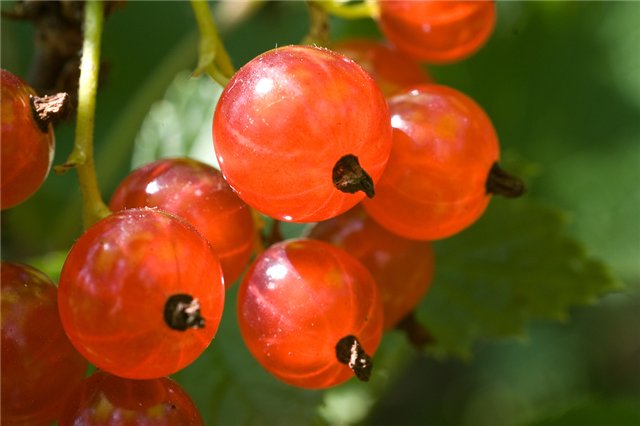Red currant berries include up to 4% acid and up to 10% of sugars, pectin, tannins, mineral salts, vitamins C, A, R, large amounts of iodine, potassium, phosphorus, sodium and magnesium. All these substances are necessary for maintaining normal functioning of the body.
So, oksikumarina in the composition of currants affects normal blood clotting, allowing you to use berries to prevent heart attacks. Pectin frees the body of unwanted cholesterol, thereby preventing the development of atherosclerosis. Vitamin C is necessary to strengthen the body and increase the immune system for better resistance to viruses in red currant is several times more than in citrus. In addition, the red currant has a hemostatic, choleretic, laxative, antipyretic, analgesic (due to the coumarins and furocoumarins) and antitumor activity. It inhibits the development of tumors, inhibits inflammation.
Also red currant normalizes and treats diseases of the gastrointestinal tract. It is often used for nausea, vomiting, gastritis. By eating the berry removes from the body toxins and excess uric acid salts than can be used during dieting and cleansing the body.
Useful berries and those that quench the thirst and stimulate appetite.
Useful properties have not only currant berries, but its leaves, an infusion of which is used in the treatment of hypovitaminosis, cystitis and kidney disease. Infusion also helps those people who suffer from stomach ulcers and hyperacidity gastritis.
Despite the healing properties of berries, it should not be used if there are contraindications. The product is not consumed in the presence of peptic ulcer disease, hemophilia, hepatitis and gastritis in the acute stage. As the red currant has an impact on the blood, it is better not to use at low blood clotting.
The benefits and harms of red currant
Red currant is not only the berries are used to
you can make a great jelly, jam, jam, jam, marmalade, juice or tincture but also healthy product. The benefits of red currants you can see, if you read its composition.
you can make a great jelly, jam, jam, jam, marmalade, juice or tincture but also healthy product. The benefits of red currants you can see, if you read its composition.

Is the advice useful?